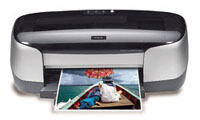The Epson Stylus Photo 960: Is This Really The Ultimate Digital Darkroom Printer
Following the excellent performance
of the Epson Stylus Photo 890/1280 ink jet printers I honestly did not
expect that further improvements in dye ink jet photo printers could
result in significantly better print quality. That of course does not
preclude improvements in printer performance and capabilities, as well
as convenience, all of which the new Epson Stylus Photo 960 have that
more than justify a new model. This new model is sleeker, quieter, faster,
and does more than the previous 890. |
||||
Better Prints? |
||||
Using The Epson Stylus
Photo 960 |
||||
As I used the Epson Stylus
Photo 960 more for my daily printing, particularly proofing new scans
and re-edited and manipulated images, I became aware the prints that
resulted contained more of what I was seeing in the image on screen.
This was not so much a matter of color matching, which is a function
of color management that I maintain with precise calibration and profiling,
but that the depth of color and the nuances of tone were more fully
reproduced. All of this printing over a little more than a week was
using the standard Epson Photo Paper, which I find can be purchased
in quantity quite economically. |
||||
Epson offers two papers that assure the longest potential life of 25 years--Heavyweight Matte and ColorLife. Unfortunately, I did not have samples of ColorLife stock, but from previous experience would assume it would print much like Premium Luster, which I did test, as well as Premium Semigloss. To my eye, and this may just be personal taste and the viewing light conditions I have, the Premium Glossy and Heavyweight Mattes favor this printer's performance more than Luster or Semigloss. Good old standard Epson Photo Paper seemed to produce the best appearing prints overall. As for the black and white enthusiast, and there are more of these than Epson seems to want to acknowledge, I found the only fully acceptable prints were made setting the driver to black ink only and printing at 2880dpi using the Automatic Adjustment setting. This functions best again on Epson Photo Paper, Heavyweight Matte, and Premium Glossy, with my personal preference remaining the standard Epson Photo Paper. |
||||
Evaluation And Recommendation
|
||||
SPECS |
- Log in or register to post comments










































